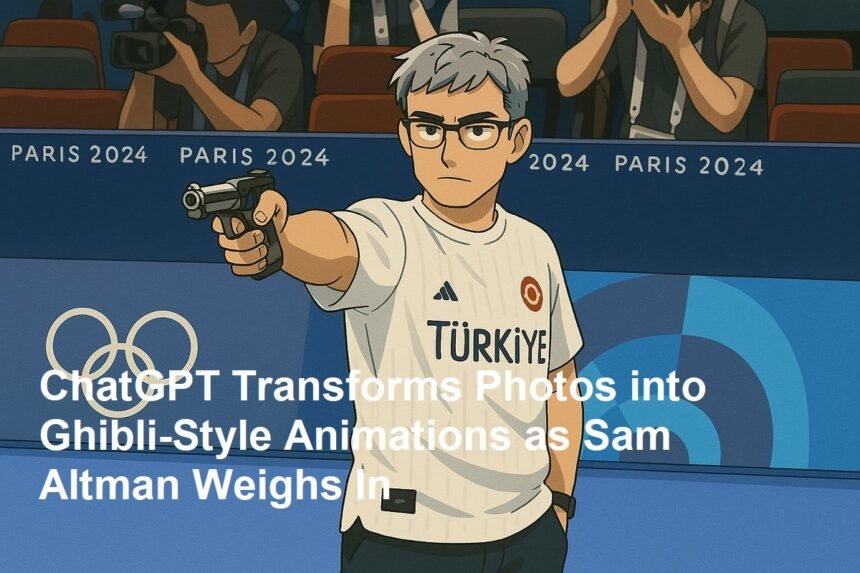In a groundbreaking development that merges artificial intelligence with the enchanting world of animation, ChatGPT has unveiled a feature that can transform users’ photos into animations reminiscent of Studio Ghibli’s iconic style. The new capability, which has quickly captured the imagination of fans and digital artists alike, represents a fusion of advanced AI image processing with the nostalgic aesthetics of one of Japan’s most beloved animation studios.
The innovation allows users to upload any photograph—be it a landscape, a cityscape, or even a personal portrait—and receive an animated rendition that echoes the soft, dreamlike visuals of Studio Ghibli films such as My Neighbor Totoro and Spirited Away. The transformation process employs deep learning algorithms that analyze the original image’s details, textures, and color palettes, and then reimagine them with the signature watercolor-like quality and whimsical character design that have become synonymous with Ghibli’s work.
CEO of OpenAI, Sam Altman, addressed the innovation during a recent press briefing, emphasizing the potential of this new tool to revolutionize the creative process. “We’re incredibly excited to see how this new feature inspires creativity across different communities,” Altman said. “By enabling users to reimagine their everyday images with a touch of magic reminiscent of Studio Ghibli, we hope to open up new avenues for artistic expression and personal storytelling.” His comments underscored the company’s commitment to merging technology with art to make creative tools more accessible and engaging.
The development is particularly noteworthy because it bridges the gap between advanced AI capabilities and the world of traditional animation. While previous tools have allowed for basic photo manipulation and style transfer, ChatGPT’s new feature goes further by creating animations that not only mimic a static style but also capture the fluid, dynamic essence of motion that is so characteristic of Ghibli films. This is achieved through a sophisticated combination of image processing and motion generation algorithms that work together seamlessly to produce smooth transitions and lifelike animations.
Early adopters of the technology have already begun sharing their creations on social media platforms, with many expressing astonishment at how the tool brings out hidden artistic qualities in ordinary photographs. Fans of Studio Ghibli, in particular, have hailed the feature as a delightful homage to the studio’s legacy, noting that the animations evoke a sense of wonder and nostalgia. Digital artists are also exploring new creative horizons, using the tool as a starting point for further manual refinements and unique artistic projects.
The potential applications of the feature extend far beyond simple amusement. Educators see opportunities for innovative teaching methods in art and film studies, while marketing professionals are considering its use in creating engaging, visually appealing content that stands out in a crowded digital landscape. Moreover, the technology could empower amateur creators, giving them the tools to experiment with different artistic styles without needing extensive training or expensive software.
Despite the widespread enthusiasm, some experts caution about the implications of such transformative technology. Intellectual property rights and the balance between algorithmic creativity and human artistry are topics that have come under discussion. Altman acknowledged these concerns, stating, “As we roll out these new features, we remain committed to addressing ethical considerations and ensuring that creators’ rights are respected. Our goal is to foster innovation while upholding the standards of creative integrity.”
The release of ChatGPT’s photo-to-Ghibli animation tool is just one example of how artificial intelligence is reshaping the creative landscape. It reflects a broader trend of leveraging machine learning to democratize art and enable more people to participate in the creative process. With tools like these, the future of digital art appears not only bright but also richly animated.
As users continue to explore and share their transformed images, the impact of this technology is likely to ripple across the artistic community, sparking further innovations and collaborations between tech companies and creative professionals. For now, the blend of AI and the magical world of Studio Ghibli stands as a testament to the transformative power of technology in reimagining our visual experiences.












